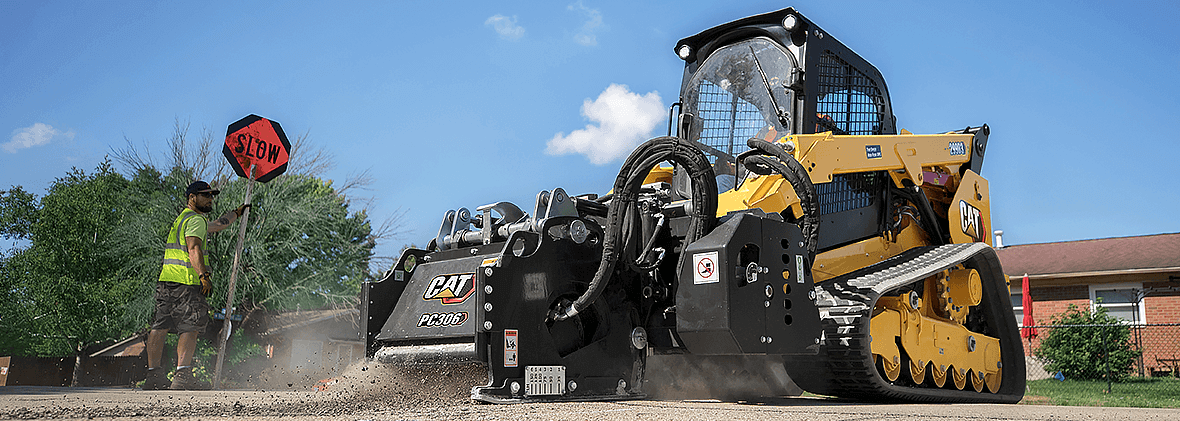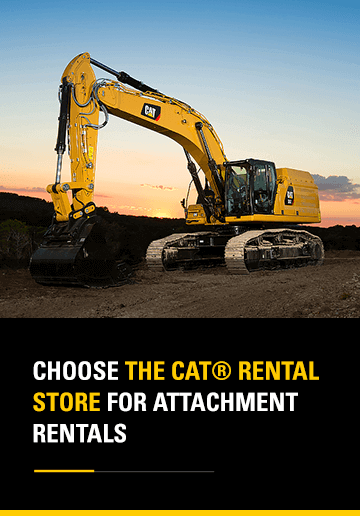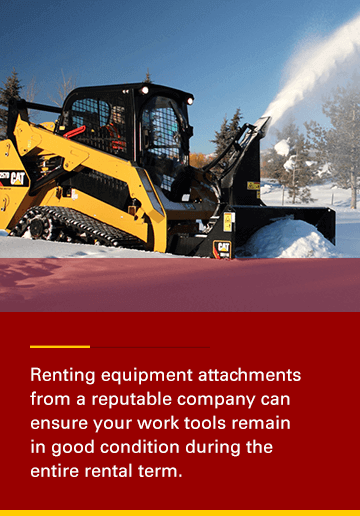
Why Renting Equipment Attachments Makes Business Sense
Attachments turn one machine into many. Instead of buying a new tool for every job, you can rent the attachment you need, finish the work, then return it. You keep projects moving, control costs, and avoid storing gear you use a few weeks a year. Use this guide to understand attachment rental benefits and see common options for earthmoving, snow work, cleanup, compaction, and landscaping. If you want a deeper overview of attachment rentals or a breakdown of skid steer attachments, these resources will help.
Why Rent Attachments
- Lower upfront costs vs. buying a dedicated tool you rarely use
- Less storage and maintenance because the dealer handles upkeep between rentals
- Right tool for each task so one machine does more in a single day
- Fast changeovers so crews stay productive between tasks
- Access to a wide selection of work tool attachments and specialty tools
- Try before you buy to confirm performance on your site
- Scale up for seasonal spikes; scale down when demand eases
- Dealer support if you need help pairing the right attachment to your machine
Popular Attachment Types by Task
Earthmoving and Utility Work
Augers drill perfect holes for fence posts, footings, and planting.
Trenchers cut narrow, consistent trenches for utilities and drainage.
Compactors firm backfill to ensure solid ground for building.
Snow and Ice Control
Snow plows clear roads and drives fast.
Snow pushes move large volumes across parking lots.
Snow blowers handle deep or drifted snow.
Cleanup and Finish Work
Brooms keep walks, driveways, and roads from debris.
Landscaping and Ground Care
Tillers prep soil for planting beds or restoring turf.

How to Choose the Right Attachment
- Match the attachment to your machine. Check hydraulic flow and pressure, quick coupler type, and lifting capacity.
- Size for the job. Wider tools cover ground faster but need more power and room to maneuver.
- Consider surface and material. Use a snow push on big, flat lots and a blower for drifts or tight spaces.
- Plan changeovers. Group tasks so you minimize swapping and keep production high.
- Ask your dealer for guidance. Our pros can recommend a setup based on your timeline and site conditions.
Operational Tips for Higher Productivity
- Train operators on attachment controls and safe use before starting work.
- Inspect hoses, couplings, and wear parts at each changeover. Replace or report damaged items.
- Start slow to verify hydraulic response and tool alignment, then increase speed.
- Clean tools so the next task goes more quickly.
Explore Attachment Options and Get Help
Browse work tool categories and see detailed guides for attachment rentals and skid steer attachments. When you’re ready, find your nearest location to set up a rental.
Find The Cat Rental Store Near You
